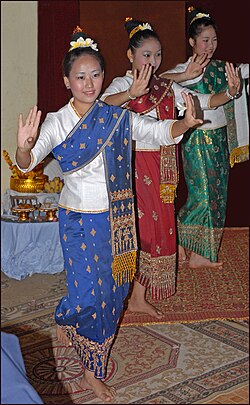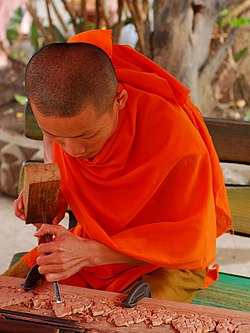Traditional sports include kickboxing martial arts, which are known collectively as muay Lao, are similar to the more popular muay Thai and their Khmer antecedents of bokator and pradal serey.
Ka-taw or kick-volleyball is also a traditional Lao sport, where players use a rattan ball and advance play using their feet, knees, chest and head.
The end of “Buddhist Lent” or Phansa is marked by boat races on the Mekong River. There are traditional races where villages will each sponsor a team, with a celebration at a designated host village. There are also sport races where rowing teams compete against each other in head-to-head races.
The increase of eco-tourism, has marked Laos as a destination for extreme sports. Laos hosts over twenty national parks, with hiking, biking, whitewater rafting, canoeing, kayaking, caving, rappelling and zip-lining being increasingly common activities.
International Competitions
The 25th Southeast Asian Games were held at Vientiane, in December 2009.
Laos first begin competing at the Olympics in 1980, and has since sent athletes to compete in: 1988, 1992, 1996, 2000, 2004, 2008 and 2012. Laos has also sent paralympians since the 2000 games in Sydney, Australia. Laos has competed in the marathon, swimming, archery, and other track events. Laos has yet to win an Olympic medal.














